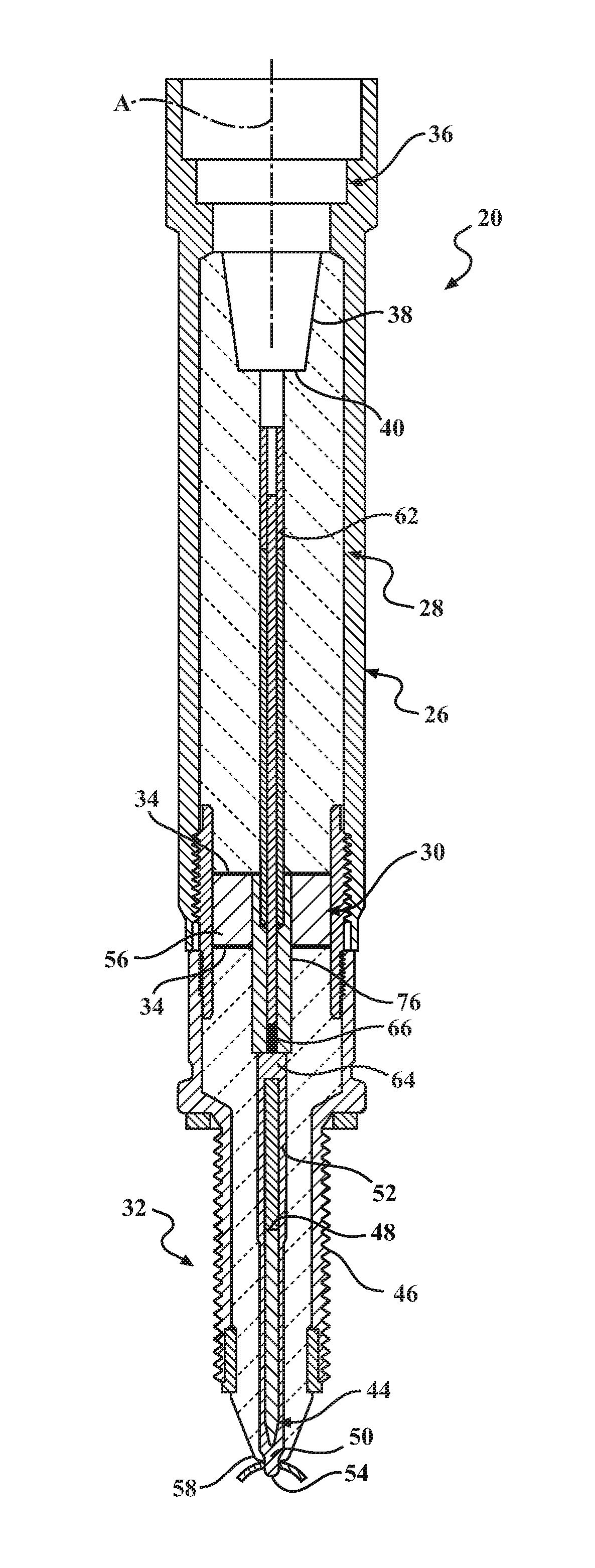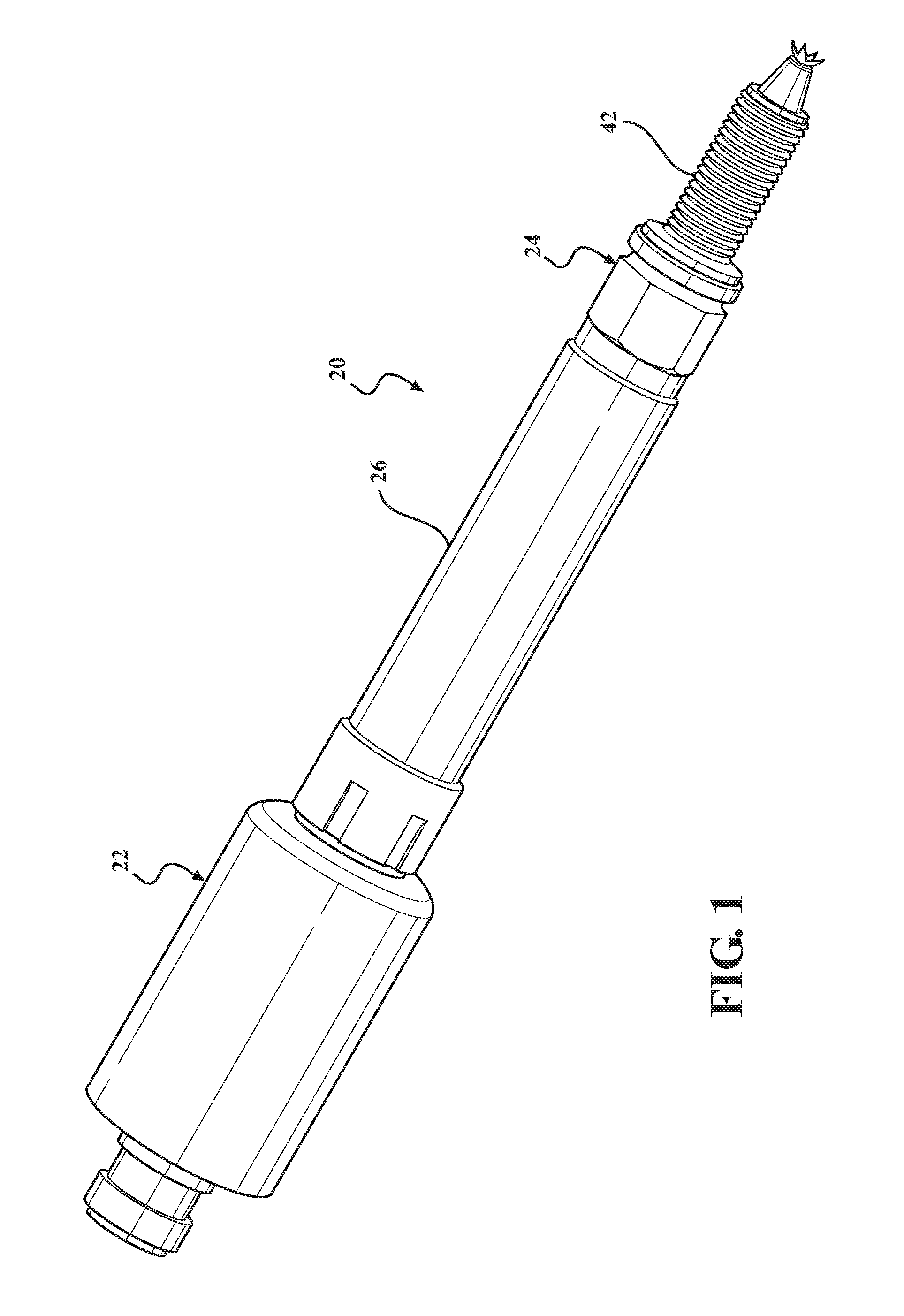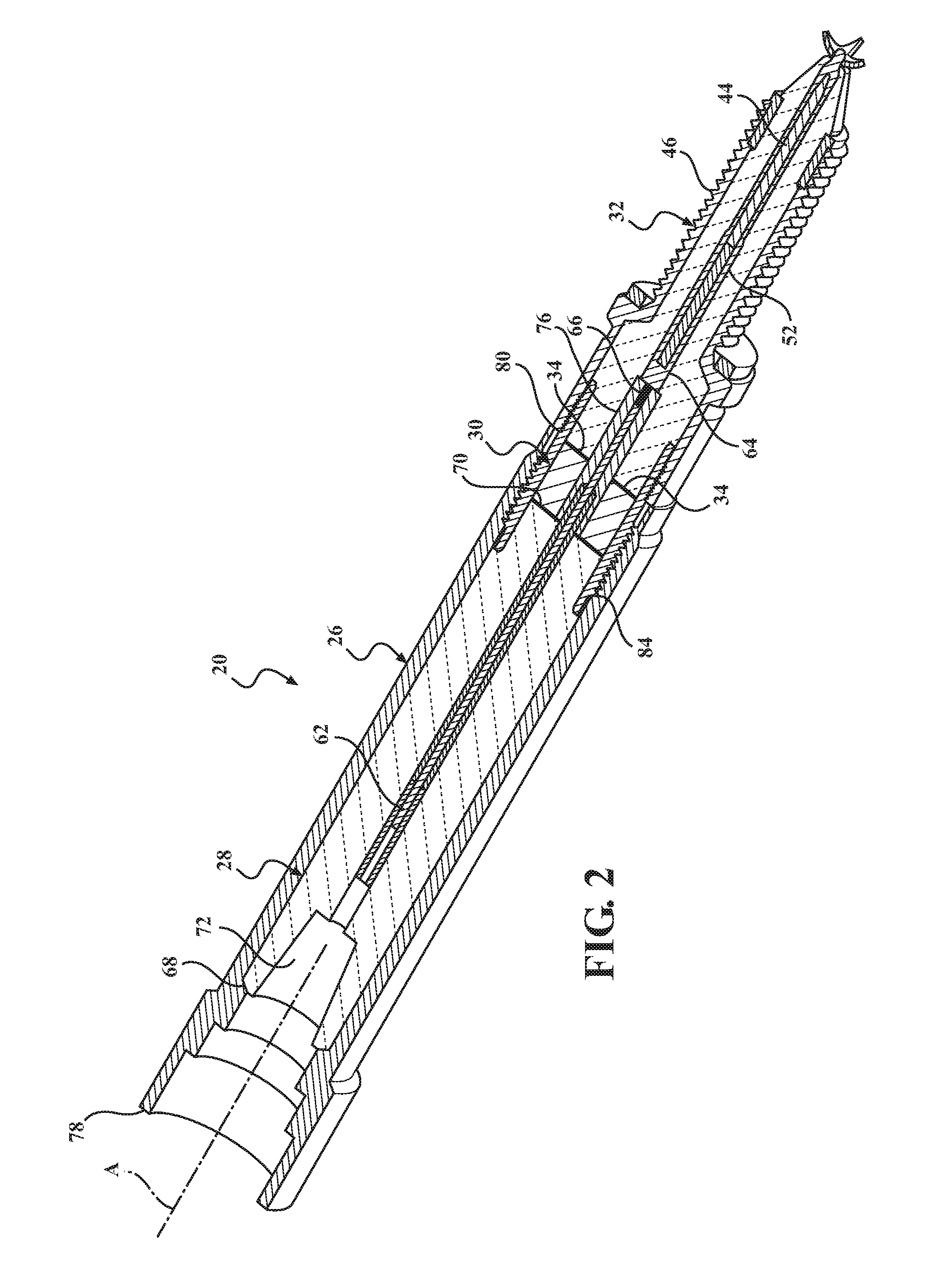Corona suppression at the high voltage joint through introduction of a semi-conductive sleeve between the central electrode and the dissimilar insulating materials
a technology of suppression and high voltage joint, which is applied in the manufacture of sparking plugs, corona discharge, electrical apparatus, etc., can solve the problems of uneven electrical field and air gaps at the interface, and difficult control, so as to reduce stress, reduce peak electric field, and increase the effect of electric field
- Summary
- Abstract
- Description
- Claims
- Application Information
AI Technical Summary
Benefits of technology
Problems solved by technology
Method used
Image
Examples
Embodiment Construction
[0042]A corona igniter assembly 20 for receiving a high radio frequency voltage and distributing a radio frequency electric field in a combustion chamber containing a mixture of fuel and gas to provide a corona discharge is generally shown in FIG. 1. The corona igniter assembly 20 includes an ignition coil assembly 22, a firing end assembly 24, and a metal tube 26 surrounding and coupling the ignition coil assembly 22 to the firing end assembly 24. The corona igniter assembly 20 also includes a high voltage insulator 28 and an optional dielectric compliant insulator 30 each disposed between the ignition coil assembly 22 and a ceramic insulator 32 of the firing end assembly24, inside of the metal tube 26. A high voltage center electrode 62 connects the ignition coil assembly 22 to the firing end assembly 24. A semi-conductive sleeve 76 extends continuously along the interfaces between the different insulators 28, 30, 32. The semi-conductive sleeve 76 dampens the peak electric field a...
PUM
 Login to View More
Login to View More Abstract
Description
Claims
Application Information
 Login to View More
Login to View More - R&D
- Intellectual Property
- Life Sciences
- Materials
- Tech Scout
- Unparalleled Data Quality
- Higher Quality Content
- 60% Fewer Hallucinations
Browse by: Latest US Patents, China's latest patents, Technical Efficacy Thesaurus, Application Domain, Technology Topic, Popular Technical Reports.
© 2025 PatSnap. All rights reserved.Legal|Privacy policy|Modern Slavery Act Transparency Statement|Sitemap|About US| Contact US: help@patsnap.com



